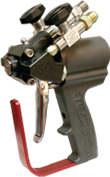When wintertime weather is in effect, being in a drafty home is more than uncomfortable. It’s going to cost much more to heat the structure. Even when it’s not cold outside, a poorly insulated house is susceptible to moisture problems and other troubles due to poor insulation. Use the following tips to ensure your insulation is up to par.
Cold Weather Insulation Warning Signals
- Evidence of Mold Growth
- Drafty Windows
- Exterior Walls are Cold to the Touch
- Flooring Materials are Cold
- Uneven Heating Distribution Throughout the Home
- Higher Energy Costs
Warm Weather Insulation Warning Signals
- Occasional Bursts of Warm Air
- Expensive Cooling Costs
- Air Conditioning System Runs Often
- Mold Growth in the Basement and Around Windows
- Some Rooms are Warmer than Others
Effective Insulation is the Key to Prepping your Home for Winter
While all insulation may seem the same, it’s certainly not. Some materials insulate better, while some are more cost effective. No matter what style of insulation you install, it’s very important that it’s installed properly to be as effective as possible. To do this, be sure that you follow these steps for effective insulation installation.
- Air Barriers- These prevent the movement of interior and exterior air through the home.
- Thermal Bridges- Structural members and other building materials that extend from the warm side to the cold side of the structure lower a home’s R-value. Reduce thermal bridges to maintain a consistent R-value.
- Fill all Cavities- Small gaps and spaces can make insulation ineffective. Fill all voids using a spray foam insulation to keep R-value consistent.
- Vapor Barrier- It’s very important to keep moisture out of the insulation system by installing a vapor barrier.
Is it Cost Effective to Insulate?
No matter how old your home is, it’s very important to keep it well insulated. In most cases, retrofitting an older home with new insulation is simple and cost effective when sprayed insulation is used to fill wall, attic and flooring cavities. Whether you have a new or older home, it’s cost effective to keep it well insulated.






